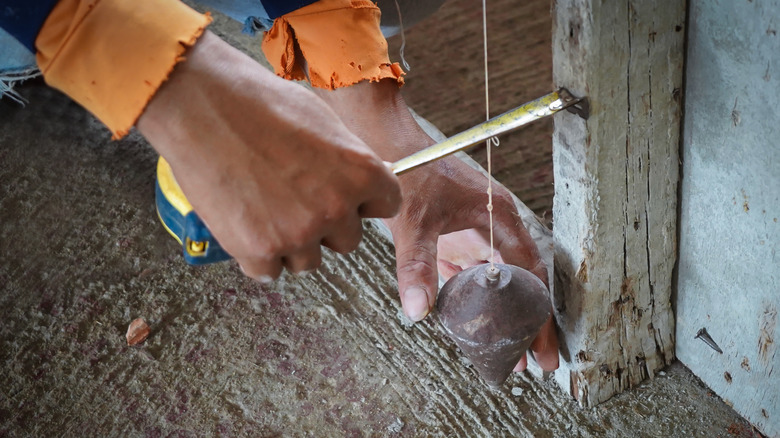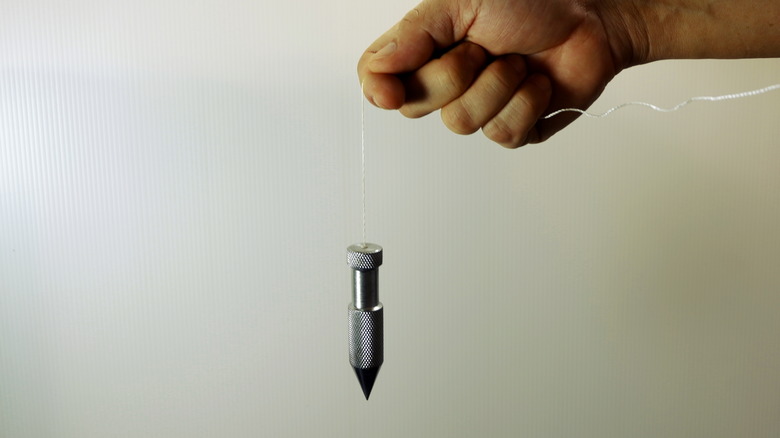Here's How Keys And Other Household Items Can Be Used As A DIY Plumb Bob
If someone asks the average DIYer to pass the plumb bob, the response will likely be something like, "That's a nectarine, and my name's not Bob." Nor is a plumb bob another name for that ballcock float valve you have to replace in your toilet every now and then. If you saw a plumb bob, you'd be quicker to guess it's some kind of laboratory weight or anti-vehicle munition. But you occasionally need a plumb bob, whether you know it or not. What this little tool does is simple and essential: it establishes a perfectly vertical reference line against which you can assess the plumbness — that is, the straight up-and-downness — of a wall, board, or another solid surface. Sometimes, you can replace a plumb bob with a laser level, a tool everyone homeowner should have. But otherwise, you'll need to make your own. And you can, with a bit of care ... but it's not quite as simple as it seems.
The plumb bob is basically a pointed weight that you can tie onto a string. But that description might give you false confidence in improvising a replacement for the tool, since there is a key requirement of a properly made plumb bob: you have to be able to attach the string directly in line with the point. When the string is attached to or held against a plane or object, the point of the plumb bob (once the thing stops moving) must be precisely beneath it.
Make an emergency plumb bob
A few objects with holes drilled through their centers (into which you can insert a string) are natural stand-ins for a plumb bob: oval and bullet-shaped fishing weights, old keys, 3D printer nozzles, or propane jet nozzles, for example. Find a lead-free fishing weight of this sort and a pliable cord as close to the diameter of the hole as possible. Thread your cord through the hole and glue it in place; you can tie a knot instead, but take care that the shape of the knot doesn't make the weight tilt to the side. Many DIYers use washers for additional weight. Choose large washers with the smallest possible hole so they won't hang crooked on top of the fishing weight.
If you're looking for a creative way to repurpose old keys, they'll work with a little attention. Since a key isn't radially symmetrical like a fishing weight or a real plumb bob, you'll want to attach your string to a small keyring and then the keyring to the key. This will reduce friction, which can make the key off-center. Also, read the plumbness along the thin edge of the key, looking at it from the back of the key rather than the side. When you can, use the string itself as the reference line and disregard the position of the key altogether, using it only as a weight. The fundamental trick is imperfect but definitely helpful in a pinch.

